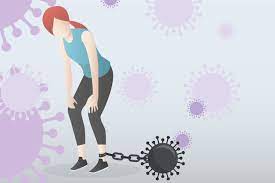
In many ways it feels like Covid has been a long haul. As communities we put ourselves through social restrictions the like of which we have never seen, the cost of which in human, in mental health, in social terms we still don’t know. We did all this for the common good. So that the vulnerable could have some protection, so that the NHS would not be overwhelmed, so that the death count would not climb higher. We made these difficult sacrifices because of the basic human impulse of solidarity and cooperation. Because we know, deep down, that our strength lies in community, in mutual aid, in unity in the face of a common threat.
Especially in the early days of the pandemic, the cost in lives among health workers and care workers was high, and those in public facing jobs bore the brunt in infection rates. Meanwhile billionaires saw an opportunity to rake in even more profits. And now that the vaccines – vaccines developed and made possible by public money and publicly supported scientific endeavour, but which corporations want to protect for themselves and profit from – now that those vaccines have been rolled out to large numbers of the adult population, many of us are ready to see the end of this phase in our relationship with Covid-19. We are ready to re-emerge from our bunkers and re-embrace our loved ones and those social activities of which we have for so long deprived ourselves.
But in real terms Covid-19 is still a new illness. We do not yet know a great deal about its longer term effects. And the research into Long Covid, but also clearer information on the initial infection, is throwing up worrying facts and questions.
For example, it has long been suggested that adolescents are somehow not affected. This is not proving to be the case. While most Covid-19-associated hospitalisations occur in adults, severe disease occurs in all age groups, including those aged 12-17. Among hopitalised adolescents, nearly one third required intensive care, and 5% required invasive mechanical ventilation. (Hospitalization of Adolescents Aged 12–17 Years with Laboratory-Confirmed COVID-19 — COVID-NET, 14 States, March 1, 2020–April 24, 2021 https://www.cdc.gov/mmwr/volumes/70/wr/pdfs/mm7023e1-H.pdf . This has implications not only for young people themselves, but those around them: teachers, carers, parents, grandparents, other education workers such as caretakers and office admin staff.
Not only is there “mounting evidence that people can still suffer from COVID- related illnesses many months after infection” (“Coronavirus might shrink parts of the brain, scientists say”, Sydney Morning Herald, June 22, 2021, https://www.smh.com.au/world/north-america/coronavirus-might-shrink-parts-of-the-brain-scientists-say-20210622-p5831j.html), but research is suggesting that Covid-19 may be associated with physical changes in the brain.
“Certain areas of their brain showed a decline in actual tissue — a shrinkage of parts of their brain,” Dr Scott Gottlieb told a CBS Sunday news program.
“It’s very concerning because it does suggest that the virus could be having a direct effect on certain portions of the brain. … And I think what it suggests is that the balance of the information that we’re accruing does indicate that COVID is a disease that could create persistent symptoms.”
We also now know that Covid-19 can cause long term symptoms even in many who aren’t hospitalised – including 5-10% of children and 10-20% of young adults. There is increasing evidence that Covid-19 can cause memory and cognitive problems, including so-called “brain fog” and fatigue.
We now know that SARS-CoV-2 is neuro-invasive. This means that it enters the brain, causing these long-term symptoms, including “brain fog”, memory loss, higher risk of stroke or neurological diseases, structural brain changes, and virus persistence in the brain. (Olfactory transmucosal SARS-CoV-2 invasion as a port of central nervous system entry in individuals with COVID-19, Jenny Meinhardt, Josefine Radke, Frank L. Heppner, Nature Neuroscience volume 24, pages 168–175 (2021) https://www.nature.com/articles/s41593-020-00758-5 ).
Neurological symptoms can persist for long periods of time, even after other symptoms recover. In particular, one study found significant reduction in grey matter in certain parts of the brain, and importantly these changes were in people who mostly had mild COVID symptoms. (6-month neurological and psychiatric outcomes in 236 379 survivors of COVID-19: a retrospective cohort study using electronic health records, Maxime Taquet, PhD; Prof John R Geddes, MD; Prof Masud Husain, FRCP; Sierra Luciano, BA; Prof Paul J Harrison, FRC Psych, The Lancet, April 06, 2021https://www.thelancet.com/journals/lanpsy/article/PIIS2215-0366(21)00084-5/fulltext?utm_campaign=lancetcovid21&utm_content=160982275&utm_medium=social&utm_source=twitter&hss_channel=tw-27013292 ).
So, it is far from certain that we have seen the end of the health problem caused by Covid-19, and as ever the working class is being put at risk before science has answered all the questions. We need to be demanding that Long Covid be taken seriously as an occupational hazard. We cannot afford to assume we are safe now.
And just as staff burnout in the NHS reaches ’emergency levels’, and just as up to 330,000 workers are pushed by their experiences towards contemplating leaving, the NHS in England is faced with the prospect of being run by Dido Harding, a candidate whose main pitch to get rid of more staff, who has a record of running a track and trace system that spectacularly failed to do what is was supposed to do, at the astonishing cost of £37bn for its first two years, and for which hundreds of consultants from firms such as the parasitic McKinsey & Company, self-proclaimed “trusted advisor and counsellor to many of the world’s most influential businesses and institutions”, pocketed up to £6,624 a day.
This fight is far from over. We cannot allow our relief at the winding up of lockdown measures to blind us to the struggles that still lie ahead.
First published on No Safety No Work.
